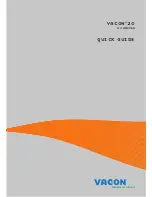
Installation Guide
ECL Comfort 310, application A376
7.2 Return limit
The return temperature limitation is based on a constant
temperature value.
The controller automatically changes the desired flow temperature
to obtain an acceptable return temperature when the return
temperature falls below or gets higher than the set limit.
This limitation is based on a PI regulation where P ('Infl.' factor)
responds quickly to deviations and I ('Adapt. time') responds
slower and over time removes the small offsets between the
desired and actual values. This is done by changing the desired
flow temperature.
Limit (return temp. limitation)
13030
Circuit
Setting range
Factory setting
3
10 ... 110 °C
40 °C
Set the return temperature you accept for the system.
When the return temperature falls below or gets higher than the
set value, the controller automatically changes the desired flow
temperature to obtain an acceptable return temperature. The
influence is set in 'Infl. - max.' and 'Infl. - min.'.
Infl. - max. (return temp. limitation - max. influence)
13035
Circuit
Setting range
Factory setting
3
-9.9 ... 9.9
-2.0
Determines how much the desired flow temperature will be influenced if the
return temperature is higher than the calculated limit.
Influence higher than 0:
The desired flow temperature is increased, when the return
temperature gets higher than the calculated limit.
Influence lower than 0:
The desired flow temperature is decreased, when the return
temperature gets higher than the calculated limit.
Example
The return limit is active above 50 °C.
The influence is set to -2.0.
The actual return temperature is 2 degrees too high.
Result:
The desired flow temperature is changed by -2.0 x 2 = -4.0 degrees.
Normally, this setting is lower than 0 in district heating systems to
avoid a too high return temperature.
Typically, this setting is 0 in boiler systems because a higher return
temperature is acceptable (see also 'Infl. - min.').
Infl. - min. (return temp. limitation - min. influence)
13036
Circuit
Setting range
Factory setting
3
-9.9 ... 9.9
0.0
Determines how much the desired flow temperature will be influenced if the
return temperature is lower than the calculated limit.
Influence higher than 0:
The desired flow temperature is increased, when the return
temperature gets below the calculated limit.
Influence lower than 0:
The desired flow temperature is decreased, when the return
temperature gets below the calculated limit.
Example
The return limit is active below 50 °C.
The influence is set to -3.0.
The actual return temperature is 2 degrees too low.
Result:
The desired flow temperature is changed by -3.0 x 2 = -6.0 degrees.
Normally, this setting is 0 in district heating systems because a lower
return temperature is acceptable.
Typically, this setting is higher than 0 in boiler systems to avoid a too
low return temperature (see also 'Infl. - max.').
128
DEN-SMT/DK
VI.GU.B1.02
Danfoss District Energy
















































